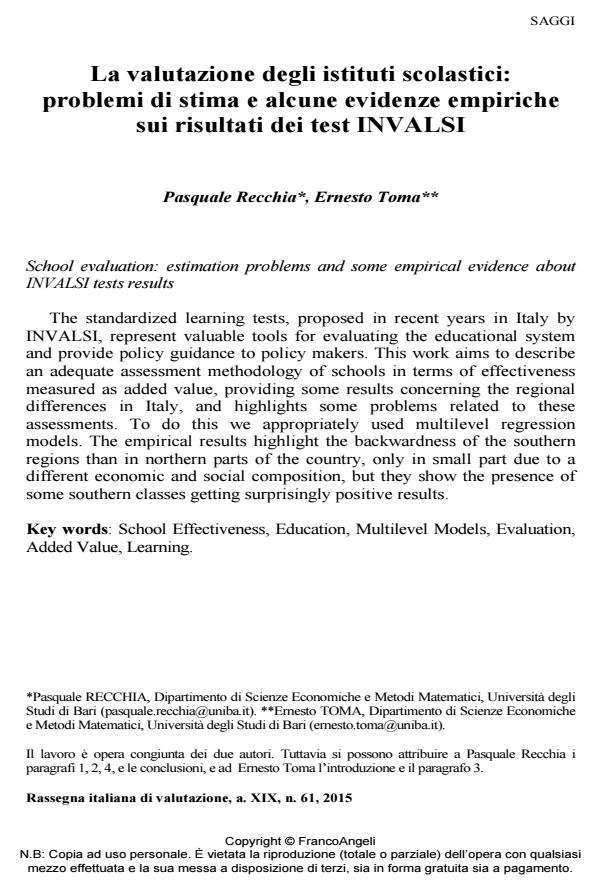School evaluation: estimation problems and some empirical evidence about INVALSI tests results
Journal title RIV Rassegna Italiana di Valutazione
Author/s Pasquale Recchia, Ernesto Toma
Publishing Year 2016 Issue 2015/61
Language Italian Pages 21 P. 49-69 File size 129 KB
DOI 10.3280/RIV2015-061004
DOI is like a bar code for intellectual property: to have more infomation
click here
Below, you can see the article first page
If you want to buy this article in PDF format, you can do it, following the instructions to buy download credits

FrancoAngeli is member of Publishers International Linking Association, Inc (PILA), a not-for-profit association which run the CrossRef service enabling links to and from online scholarly content.
The standardized learning tests, proposed in recent years in Italy by INVALSI, represent valuable tools for evaluating the educational system and provide policy guidance to policy makers. This work aims to describe an adequate assessment methodology of schools in terms of effectiveness measured as added value, providing some results concerning the regional differences in Italy, and highlights some problems related to these assessments. To do this we appropriately used multilevel regression models. The empirical results highlight the backwardness of the southern regions than in northern parts of the country, only in small part due to a different economic and social composition, but they show the presence of some southern classes getting surprisingly positive results.
Keywords: School Effectiveness, Education, Multilevel Models, Evaluation, Added Value, Learning.
Pasquale Recchia, Ernesto Toma, La valutazione degli istituti scolastici: problemi di stima e alcune evidenze empiriche sui risultati dei test INVALSI in "RIV Rassegna Italiana di Valutazione" 61/2015, pp 49-69, DOI: 10.3280/RIV2015-061004